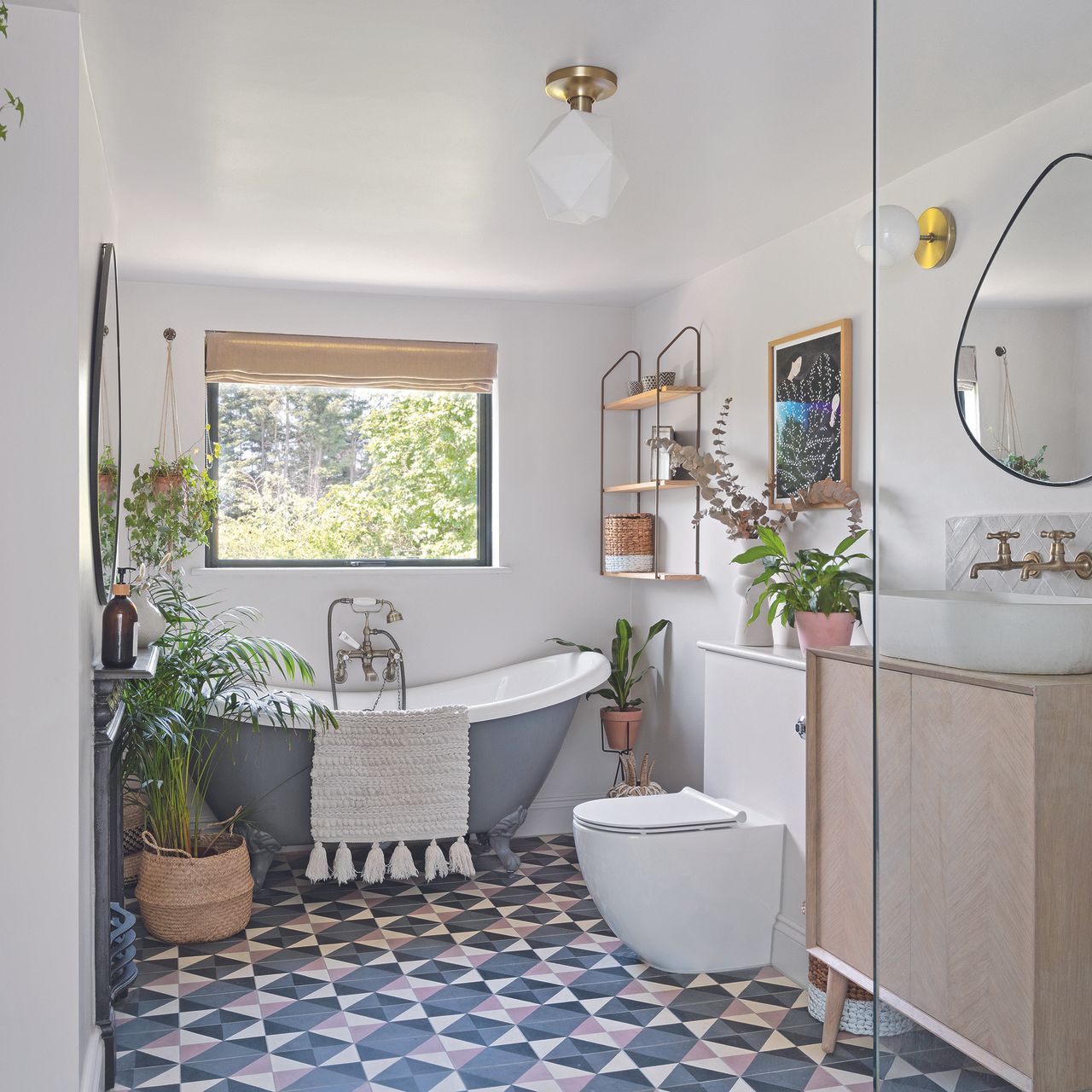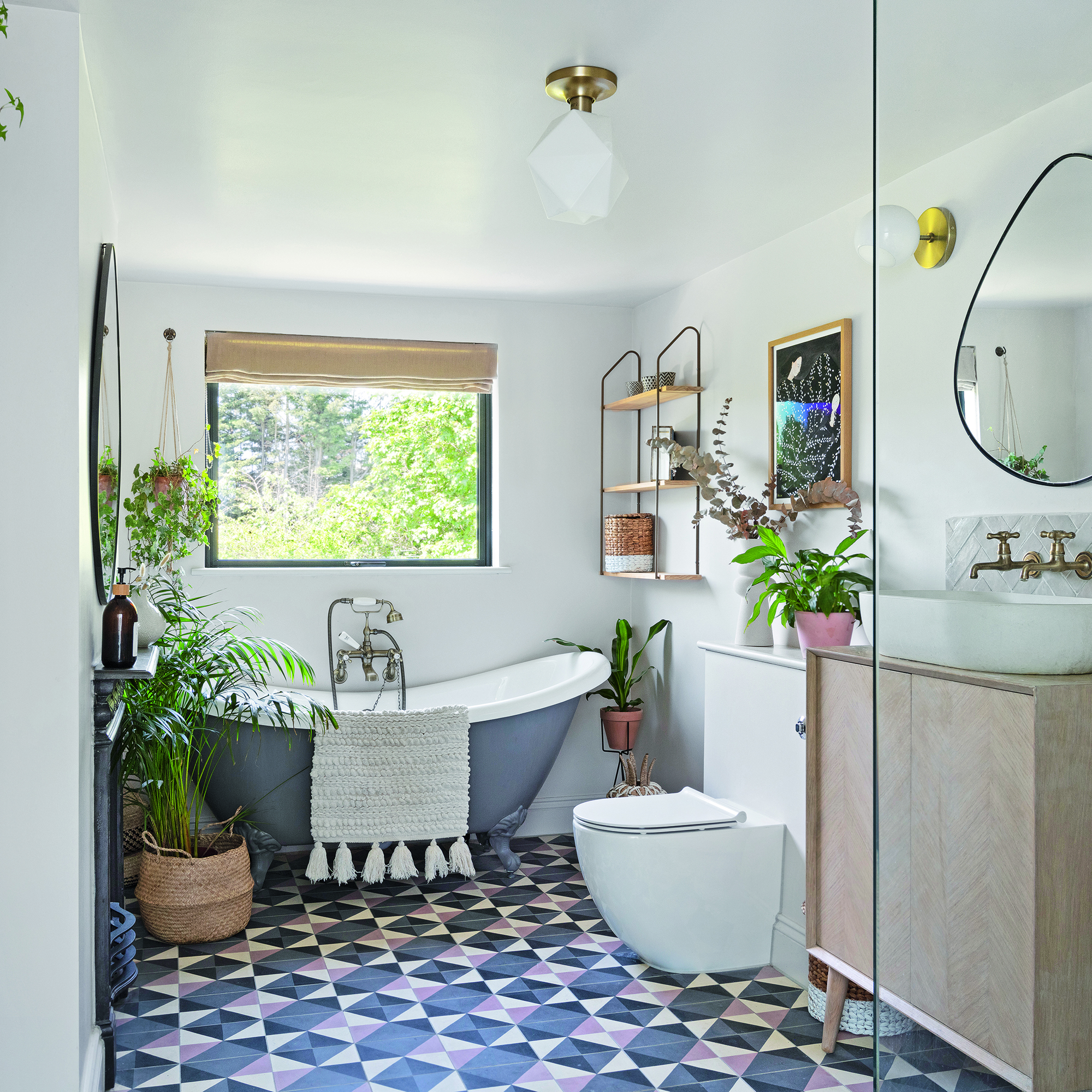
A bathroom is a room that can be tricky to design. It requires practicality above all else, and often this means steering away from more 'fun' design choices - particularly when it comes to bathroom lighting. It's safe to say I'm an interior design maximalist with a more is more approach, but the bathroom is one place I've had to succumb to minimalism.
If, like me, you want to inject colour and personality into your wash space (and have a zealous attitude towards print and chintz), the thought of paring it back might be a foreign concept. However, there is a great argument for sticking to minimalist interior design choices with bathroom lighting, and instead allowing other parts of the room to do the talking.
Don't believe me? I've also asked the experts - here's why it might be best to steer clear of maximalist lighting with your bathroom ideas.

When designing a bathroom, careful attention must be paid to balance functionality (through waterproof surfaces and carefully considered layouts) and style. You don't want a bathroom to feel stark and clinical, so creating continuity from other areas through to the bathroom will make it feel like a comfortable space to spend time in.
Bathroom lighting ideas can be one of the trickier parts of a design; there are specific rules around where you can position lighting in a bathroom so this will largely dictate what types of fittings you go for. I love going bold in a bathroom, making it feel like a joyful place to start and end your day, but this doesn't extend to lighting.
'In a bathroom, lighting should enhance the space rather than compete with it. Maximalist fittings, however striking, often compromise practicality, particularly when it comes to moisture levels, ceiling height and light distribution,' explains Louise Ashdown, head of design at West One Bathrooms.

In a kitchen, I love using wall lights with fabric shades to add whimsy to a practical space, and dramatic pendant lights are fabulous for defining a kitchen island and adding illumination in abundance. But in a bathroom, going big on these smaller features adds unnecessary faff to a scheme.
'Steam and shadows are not a good combination, and large decorative shades can distort how light falls around mirrors or basins,' Louise continues. 'The most effective schemes use discreet fittings in layered zones: ambient ceiling lighting, task lighting for grooming, and softer, dimmable options for bathing. The aim is to create light that flatters the space and the person using it.'

However, interior design is always subjective, and there's always a place for nuance.
As Keeley Sutcliffe, design manager at BC Designs, explains, 'bathrooms do not have to be minimalist to feel calm.' If you're set on making a moment out of a dramatic light fixture, then there are some ways around it.
'The key is to choose a feature piece that works with the room’s proportions and sits outside the splash zone, so it still meets the required IP ratings. For example, a chandelier over a freestanding bath can transform the space into something far more atmospheric, provided it is installed safely and supported by subtle background lighting. In the right setting, maximalist lighting is not a distraction but adds a visual statement,' Keeley adds.
I'll still be sticking to minimalist fittings both on the walls and ceilings, but a dramatic ceiling light is a sure way to add flair without impeding on the practicality of the space.
Shop minimalist bathroom lighting
For a contemporary bathroom where minimalism is everything, you can't go wrong with these clever disc wall lights from Pooky. The light radiates from the back for an eye-catching feature.







